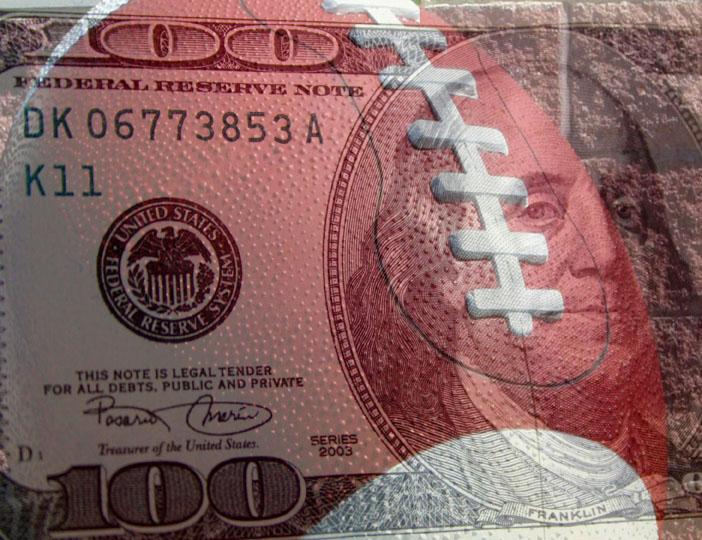7,298,329 is a seven-digit combination that Pace doesn’t think you know about.
The student athletes that participate in softball, swimming, basketball, and all of the other sports on campus sum up these seven digits. From recruiting, to expenditures, to coaches; it’s all on ope.ed.gov/athletics. 7,298,329 million dollars is the total amount of money that Pace spent on their entire athletic department including teams, coaches, and staff according to this one website run by the U.S Department of Education.
Schools across the country from Pace to Alabama are required to disclose their financial information to the U.S. Department of Education as a result of the Equity in Athletics Disclosure Act of 1994.
Not every figure that Pace is required to release to the U.S. Department of Education is satisfactory for everyone. After seeing the statistics for herself, sophomore communications major Samantha Clarke finds that certain expenses appear unnecessary.
“It does seem that Pace spends a lot of money on athletics,” Clarke said. “The amount for game day and recruiting seems unnecessary, but I do feel that athletics and game day experiences are main reasons why students are attracted to schools.”
While running college athletics is a business, not every portion has been up to par. Athletic Director Mark Brown admits that Pace can do better when it comes to recruiting.
According to ope.ed.gov/athletics, Pace spent 33, 577 dollars on recruiting expenses this past year. That dollar amount was the second lowest spent on recruiting in the Northeast-10, and Brown agrees that number needs to be higher.
“I saw that [recruiting figure], too, and said, ‘that can’t be right’,” Brown said. “Our recruiting process starts with an academic profile [of the student]. You can be eligible to play sports in the NCAA, but we don’t recruit these students if they don’t meet Pace’s admission requirements; by the time you apply filters you shrink the pool of kids we can recruit.”
Even with self-imposed restrictions on recruiting, Brown said that Pace needs to get better at acquiring quality talent.
“We aren’t aiming high enough,” Brown said. “I think there is a correlation between recruiting expenses and success. We are recruiting too safely.”
Upon hearing that, one could ask why Pace does not take more chances on students who may have more athletic prowess than intellectual prowess. While Pace imposes certain academic standards for their recruits, Brown admitted certain venues might not be as visually appealing to the eyes of prospective athletes.
“If you are playing lacrosse or football here you are a part of the worst facilities in the NE-10,” Brown said. “Students and student athletes buy with their eyes.”
While the prospective student athletes will shop with their eyes, the ones who are already here may not buy the figures so willingly.
Sports like cheerleading and dancing are not mentioned in the report by name specifically. This fact irked Clarke who has been a cheerleader since her freshman days at Pace.
“The information that stuck out to me was that Cheerleading is not even listed as one of Pace’s sports,” Clarke said. “We pay for our uniforms, and any additional attire we wear. Cheerleading is a sport and we are very active on campus.”
To be fair, the figures on dancing and cheerleading are included in Pace’s expenditure. Looking at the ‘Expenses’ portion of the report, the cost of operating dancing, cheerleading, and other sports not directly mentioned by name are included in the ‘Not Allocated by Gender/Sport’ line. According to ope.ed.gov/athletics, those sports, which include dancing and cheerleading, cost 1,803,705 dollars to run and bring in 1,783,280 dollars to Pace.
While most students could reasonably perceive that football is the biggest source of school spending, that is not the case.
“I thought football cost the most to run because they have more equipment, more people on their team, and they travel a lot,” sophomore biochemistry major Ashley Geary said. “It was interesting to learn that the total cost of the football and basketball teams alone made almost as much as the other teams put together.”
According to ope.ed.gov/athletics, Pace spent 1,038,277 million dollars on football expenses a year ago.
In contrast, the total between the men’s and women’s basketball teams spent a combined 1,565,597 million dollars. While the football team’s expenses make up approximately 14 percent of the athletic spending, the basketball teams combined make up approximately 21 percent of Pace’s spending.
Even though spending is a numbers game, there are students’ financial situations that hang in the balance of business decisions.
In 2012, Pace cut men’s and women’s track, men’s and women’s tennis, the equestrian team, and the golf team from the athletic program. Ope.ed.gov/athletics reported that the combined total cost of operating men’s track, women’s track, and golf was 131,406 dollars between them per game. The football team cost 167,937 dollars to run per game.
By the same token, it cost around 36 thousand dollars less for Pace to operate these four teams (men’s and women’s combined) than operating a football team that did not win a game a year ago.
Still, the numbers only tell a part of the story. Brown said that every decision behind the potential removal of a program depended on six interwoven factors. Pace considers the alumnae reaction, historical competitiveness, number of student athletes affected, paying trainers, facilities cost, and the overall budget outlook.
When those factors don’t add up, decisions to remove programs such as the removal of the equestrian and tennis teams are executed.
“We took a very systematic approach in making those decisions,” Brown said. “The fact is football and basketball generate the most revenue for the school – it is all about making a sound business decision.” He continued, “tennis does not develop a school spirit turnout like other sports on campus do, and when we looked at all 18 sports and compared them to other universities, sponsoring equestrian didn’t make the same level of sense.”
Although students may not agree with every financial decision made by Pace, seeing the figures first hand helps.
Senior criminal justice major Elliot Johnson first saw the reports on one of the Mac computers in the library. While the initial response was that of surprise, Johnson was able to understand both sides the reports presented.
“Because I’m not the athletic director and because I don’t know the specifics of their finances, I’m not going to pass judgment,” Johnson said. “As an athlete who has played several sports, I understand the necessity for money, and I just think that the student athlete body should know where the money is going.”
With the Mayan apocalypse past and the new year upon Pace, there is room for improvement on all sides. Brown did admit that there most likely would not be an earth-shattering shift in money into athletics.
Still that should not stop students and faculty alike from logging on to ope.ed.gov/athletics to see what the numbers are first hand.




